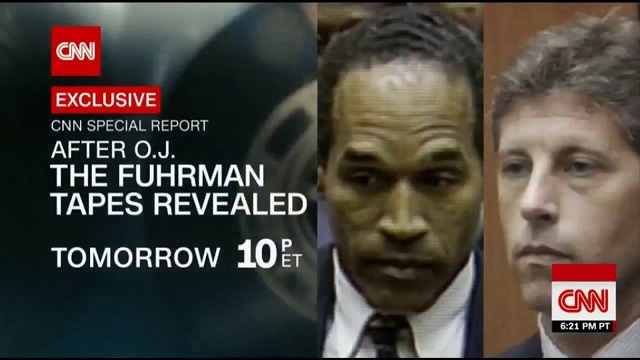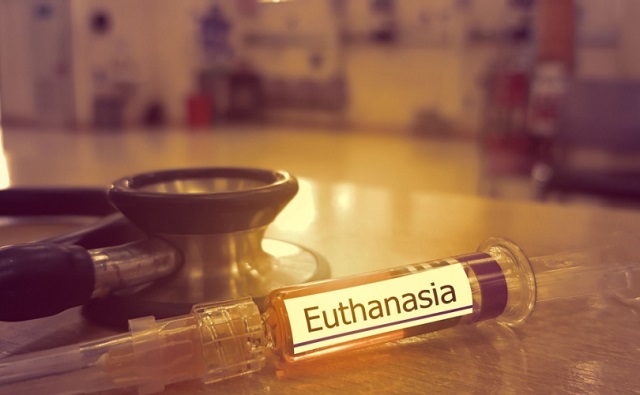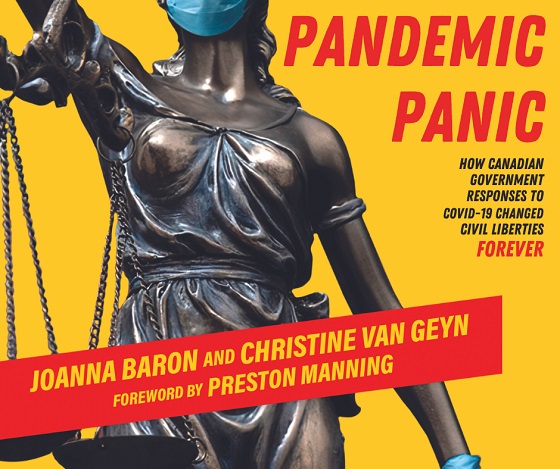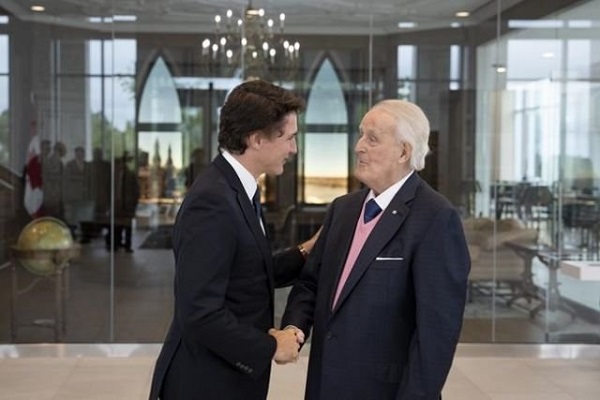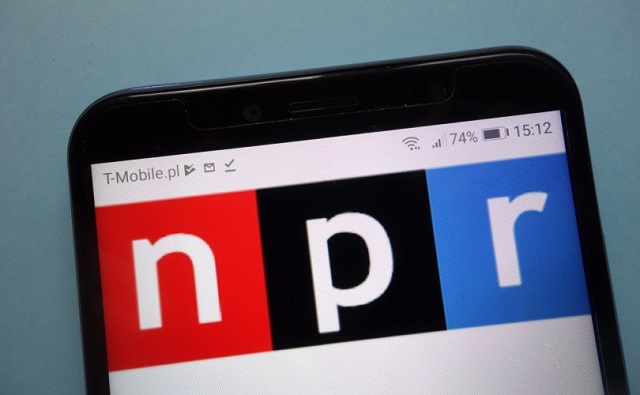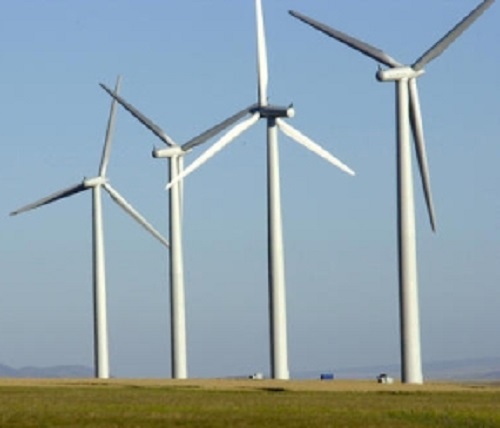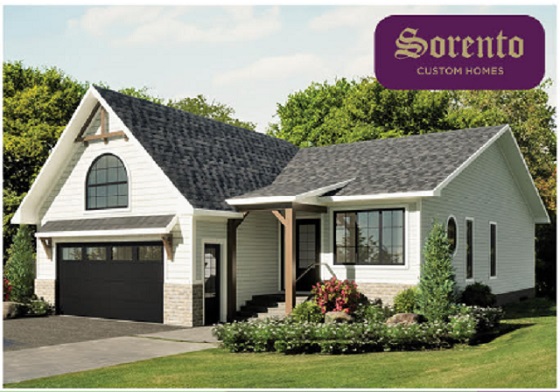Alberta
My European Favourites – Helsinki, Finland

 Founded only in the 16th century, Helsinki is the geographic, political, financial and cultural capital of Finland. In addition to the area Helsinki encompasses on the mainland, it includes over 300 islands on the inlets and bays of the easternmost arm of the Baltic Sea, the Gulf of Finland. Combined with Stockholm and Tallinn, Helsinki is one of our top tour destinations for youth hockey and ringette teams for over twenty years. Finns are avid sports people and great hosts for our Canadian groups.
Founded only in the 16th century, Helsinki is the geographic, political, financial and cultural capital of Finland. In addition to the area Helsinki encompasses on the mainland, it includes over 300 islands on the inlets and bays of the easternmost arm of the Baltic Sea, the Gulf of Finland. Combined with Stockholm and Tallinn, Helsinki is one of our top tour destinations for youth hockey and ringette teams for over twenty years. Finns are avid sports people and great hosts for our Canadian groups.

View of Helsinki harbour’s busy Market Square and the prominent Lutheran Cathedral.
Before gaining independence in 1917, Finland was ruled by the Swedes and Russians. The city was founded by Sweden’s King Gustav in 1550 to rival the Hanseatic League member city once known as Reval. Today, Reval is known as Tallinn, Estonia, and it can be reached by a two hour ferry ride.
In 1809, Russia gained control of Helsinki, and in 1812, moved Finland’s capital city from Turku to Helsinki. The decision was made because Helsinki was closer to St. Petersburg and easier to defend because of the Sveaborg sea fortress which guards the sea entrance into the city. Today the sea fortress is named Suomenlinna, and is one of the city’s most popular attractions.
The population of Helsinki proper is about 650,000, and it has a metro population of around 1.5 million including its neighboring municipalities like Vantaa and Espoo. This makes it the 3rd largest city of the Nordic countries, after only Stockholm and Copenhagen. While having all the conveniences of a modern city, Helsinki is a great destination for nature lovers. There are parks and vast areas of unspoilt nature to explore year round. In the summer months, when days are long, there are beaches, boating and watersport opportunities on the sea or at nearby lakes.
Helsinki has an interesting mix of various architectural styles including modern structures that are on the cutting edge of design. The city has a vibrant nightlife with many clubs, bars and late night eateries. The culinary scene is varied from the popular local hamburger chain, Hesburger, to Michelin-star restaurants. There is even a restaurant in the city centre decorated with rustic tables and old tractors serving traditional reindeer dishes. If you want to enjoy a beer while passing Helsinki’s main sights, you may be interested in the Sparakoff Pub Tram. The red colored tram with the destination board reading “PUB” takes about 45 minutes to make a round trip. Plenty of time to enjoy a beverage or two.

The Russian Orthodox Uspenski Cathedral, the Allas Sea Pools and the Sky Wheel Helsinki.
Katajanokka Island
Inaugurated in 1868, the Uspenski Cathedral is the center of the Eastern Orthodox faith in Finland. The cathedral was built using 700,000 red bricks that were brought in by barge from a demolished fortress in the Baltic. Entrance to the cathedral is free, and about half a million tourists visit it annually to see the elaborately decorated interior and several valuable icons. The cathedral was built upon a hillside of the Katajanokka island, which forms the eastern side of the city center and the Helsinki harbour. Overlooking the city, the cathedral is a great place to start our journey through Helsinki.
Walking down from the cathedral to the waterfront, we immediately see the 40 meter tall Sky Wheel Helsinki. The wheel offers great views of the city, the sea and the surrounding islands. The wheel has two unique gondolas. One’s interior has leather seats with a glass floor and includes a bottle of champagne for a 30 minute ride. The other is the SkySauna. Yes, we all know Finns love their saunas, so why not combine a ferris wheel ride with a sauna.
Next to the wheel, we find the Allas Sea Pool which has three pools right in the Heslinki harbour. One pool is for lap swimming, one is for families and one is a salt water pool. The fresh water pools are heated, the salt water pool is not. In addition to the pools, there are saunas and a restaurant with terraces to enjoy the views. For those looking to experience a Finnish sauna, it’s a convenient location. If you have time, I would recommend the Löyly sauna which is located near the Tallin ferry terminal. There are many places in Helsinki offering a sauna, so finding one is easy.

The Presidential Palace, Market Square and a food vendor selling a fish and vegetable lunch.
Kauppatori Market Square
Taking one of the little bridges from Katajanokka island to the market square we will pass the yellow Presidential Palace. The former Russian imperial palace, contains the Office of the President of the Republic and is used for official functions and receptions. Continuing past the palace, we arrive at the Kauppatori Market Square. The square has been a marketplace for hundreds of years and is a popular tourist attraction. The year round market’s kiosks sell fresh fish, fruit, vegetables, handcrafts, clothing and souvenirs. There are also stands that sell prepared food and beverages. A warm bowl of salmon soup with rye bread or a plate of grilled fish with vegetables make a quick, inexpensive and tasty lunch. The square faces the busy Port of Helsinki (Helsingen Satama) and from here you can take boat tours of the archipelago or to the Suomenlinna Island fortress. You can also see the huge Viking and Silja Line ferries arriving in the morning and departing in the evening for Stockholm.

Senate Square with the Helsinki Cathedral. Group photo of our 2016 World Juniors fan tour.
Senate Square
The light blue Helsinki City Hall is located right in front of the Market Square. Taking a side street along the City Hall we will arrive at the expansive Senate Square with a statue of Russian Czar Alexander II at its centre. The white neo-classical Lutheran Helsinki Cathedral, built in 1852, dominates the north side of the square and towers over the city center. The west and east sides of the square have two similarly looking yellow buildings. The eastern building houses the offices of the prime Minister of Finland and the cabinet. The one on the west side is the main building of the University. North of the University building is the National Library of Finland. The ‘Sederholm house” on the southeast corner of the square is the oldest, built in 1757. The square is used for many events including art displays, food festivals, concerts, New Year’s celebrations and the Christmas market.

Helsinki’s Old Market Hall, the Havis Amanda fountain and the Esplanadi’s pedestrian walkway.
The Old Market Hall and the Esplanadi
Walking back towards the harbour, we will go past the market square on the west side of the harbour to Helsinki’s Old Market Hall. Open in 1889, it is Finland’s oldest indoor market. In the lively market you will find merchants selling meat, fish, shellfish, cheese, fruit, vegetables, baked goods, spices, coffee, tea and even a small wine and spirits shop. The cafés and restaurants in the Old Market Hall are a great place to have a break from sightseeing or have a nice lunch.
After grabbing a coffee at the Market, we head back towards the market square and to an interesting fountain that was built in 1908. The Havis Amanda fountain has a nude female statue, often referred to as Manta, at the centre. It was created by Finnish artist Ville Vallgren at his studio in Paris, France. The fountain has four seals looking up to the sea nymph as she rises out of the water. The first of May is the start of the summer for students and in celebration they would don a white cap. Since the early days of the fountain, students have celebrated “May Day” by placing a cap on the head of Manta.
The Havis Amanda fountain sits at the foot of the National urban park called the Esplanadi. This elongated park, opened in 1818, has a wide pedestrian center with numerous benches and green space on either side. The historic Kappeli restaurant, open since 1867, and the Espa Stage, used for concerts, are at the eastern entrance to the Esplanadi. There are pieces of art throughout the Esplanadi including a statue of Finland’s national poet, Johan Ludvig Runeberg, at the very centre of the park. At the western end of the park, we find the Swedish language theatre aptly named, the Swedish Theatre. Originally built in 1860, it burned down just three years later. In 1866, it was rebuilt in neo-classical style, but in 1935 it was renovated and the richly decorated exterior was changed by the architects to a simpler “functionalist” style.
The Esplanadi has a street on either side of the park and the surrounding buildings, especially on the north side, have upscale shopping and restaurants. On the north west end of the park just across the street from the Swedish Theatre is the Stockmann Department Store. The iconic Stockmann building, the largest department store in the Nordic countries, was built in 1930 and the brand’s history dates back to 1858.

The entrance façade and clock tower of the Helsinki Train Station. The unique Kamppi Chapel.
The Central Station, Art and A Chapel of Silence
Turning right at the Mannerheimintie street, we walk about 200 meters to Kaivokatu street where we can see the train station on the right. The Helsinki Central Station is the main hub for commuter and long-distance trains for approximately 200,000 people per day. The impressive Finnish granite building was inaugurated in 1919 and has a pair of statues standing guard while holding spherical lamps on each side of the grand entrance. Along with the “stone men,” the station is known for the clock tower on its east side. The Helsinki Central Station has a city metro station, restaurants and an underground shopping centre.
Beyond the train station is a huge open space called the Rautatientori, or Railway Square. On the south side of the square is the Ateneum, the museum of Finnish and international art. The museum, in a beautiful 1887 building, has Finnish works of art from the 18th century to the 20th century and is one of the three museums that form the Finnish National Gallery. In addition to the extensive art from Finland, it has over 600 international pieces.
Going back on Kaivokatu street we cross Mannerheimintie street to Simonkatu street and walk about a block. We will see a curious looking oval cylindrical building with a wood exterior. This is the very unique Kamppi Chapel or the “Chapel of Silence.” The chapel holds up to 60 people and is intended to be a place of calm and silence in a busy urban centre. The chapel is free to visit during opening hours.

The Lutheran Temppeliaukio Church’s alter, pipe organ and the upper balcony.
Parliament and Museum District & Rock Church
After enjoying a moment of silence, we make our way back to Mannerheimintie street and continue along it until we reach Mannerheim Square and the equestrian statue of Marshall Gustaf Mannerheim. The bronze statue of the Finnish military leader and statesman was erected in 1960. The statue sits in front of the Kiasma, the museum of contemporary art, which was built in 1990. Like the Ateneum, the Kiasma is part of the Finnish National Gallery. Near the Kiasma, you will find the architecturally striking Helsinki Central Library Oodi, the Helsinki Music Centre, the National Museum of Finland and the event and congress center, Finlandia Hall. Across the street from the Mannerheim statue, we also find the Finnish Parliament building. The red granite parliament building with fourteen Corinthian columns was built in 1931.
Only a couple of minutes walk from the Mannerheim Square is the Temppeliaukion Kirkko, which is better known as the Rock Church. Designed by architect brothers Timo and Tuomo Suomalainen and opened in 1969, the Lutheran church was built into solid rock, and is filled with natural light from the large skylight that leads up to the copper dome. The acoustics in the church are exceptional and it is frequently used for concerts. The exposed rock walls of the church create an interesting backdrop for the altar and an interesting contrast with the church organ with 3001 pipes. The church welcomes over half a million visitors a year.

The Sibelius monument, our Oilers group with Jari Kurri at Hartwall Arena and the pub tram.
The Sibelius Monument and the Olympic Stadium
West of Helsinki’s city center is Seurasaarenselkä Bay. On the eastern side of the bay, you will find Sibelius Park and the Sibelius Monument. The monument, made from more than 600 hollow steel pipes, is dedicated to Finland’s greatest composer, Jean Sibelius. He is noted for having encouraged, through his works, the rise of a Finnish national identity and independence from Russia. In the center of the bay is the densely forested Seurasaari island which is home to the Seurasaari Open-Air Musuem. The museum has transplanted wooden buildings from throughout Finland.
In 1952, Helsinki was the host city for the 15th Olympiad and is the northernmost city to host the summer Olympics. The flame was lit by Finland’s greatest Olympian, runner Paavo Nurmi, who won 9 gold and 3 silver medals at the 1920, 1924 and 1928 games. The Olympic Stadium is located only two kilometers north of the city centre and was originally built for the 1940 Olympics that were cancelled due to the second World War. The stadium has undergone renovations in the early 1990s, in 2005 for the World Championships in Athletics, and another renovation phase was scheduled to be completed in 2020. Over time, the stadium has gone from being able to host 70,000 spectators to just over 40,000. The stadium today hosts mainly soccer games, athletics competitions and concerts. The stadium’s 72 meter tower is a Helsinki landmark and its height is equal to the length of Matti Järvinen’s gold medal javelin throw in the 1932 Summer Olympics. The stadium visitor center is located at the foot of the tower. While in Finland, you may want to try the alcoholic “Long Drink” that was developed to serve visitors to the 1952 Olympics. Locally the Long Drink is called a “Lonkero” and the original, a mix of gin and grapefruit soda, is made by Hartwall.
Not far from the Olympic Stadium is the Linnanmäki amusement park, which opened in 1950. The park is owned by a non-profit agency that operates the park to raise funds for Finnish child welfare programs. South of the park is Töölö Bay with a surrounding green space, walking paths and two important cultural centres, the Helsinki City Theatre and the Finnish National Opera and Ballet.
A couple of kilometers north of Linnanmäki is the 14,000 seat Hartwall Arena, which is the home of the KHL’s Jokerit hockey team. The arena was built in 1997 and is used mostly for basketball, hockey and concerts. In 2016, we had a large group of Canadian hockey fans in Helsinki for the IIHF World Junior Hockey Championships, and the Hartwall Arena was the main venue for the tournament. Finland won gold with a team loaded with future NHLers Sebastian Aho, Patrick Laine, Mikko Rantanen, Kasperi Kapanen, Olli Juolevi and tournament MVP Jesse Puljujarvi. The atmosphere in the arena was electric with thousands of patriotic Finns erupting in joy at the final whistle. If Canada can’t win, the next best thing is to get caught up in the passion of the local fans.
In the fall of 2018, we had a group of Edmonton Oilers fans in Gothenburg, Sweden for the NHL season’s opening game against the New Jersey Devils. At the end of the tour, we took the overnight ferry from Stockholm to Helsinki. During our city tour, we stopped at the Hartwall arena and we surprised the group with a meeting with Oilers legend Jari Kurri. After many photos and autographs, Kurri, who was the General Manager of local team Jokerit, graciously talked hockey and watched practice with us.

The Suomenlinna ferry leaving from Market Square, the fortress walls and the dry dock.
Suomenlinna
The Suomenlinna, or Sveaborg, is an inhabited sea fortress built on eight islands south east of the city centre at the entrance to Helsinki harbour. A UNESCO World Heritage site, it was originally founded by the Swedes in 1748, but in 1808, the fortress was overtaken by Russia. It remained in Russian control until Finnish independence in 1918. The fortress welcomes over half a million tourists and locals annually. The summer months are especially busy and Suomenlinna can be easily reached by a short ferry ride from Market Square.
There are just under 1000 permanent residents on Suomenlinna and just under 400 people who work on the island year-round. Some of the reconstruction of the fortifications and general maintenance is done by volunteer inmates, who are part of an on-site minimum-security penal labour colony. A guided visit to the fortress includes Great Castle Courtyard, Piper’s Park and the large Dry Dock. There are various museums at Suomenlinna including one detailing the life of Swedish officers in the 18th century, a toy museum, a military museum, a submarine museum and a customs museum. The main Suomenlinna Museum, located in the Suomenlinna Centre, details the history of the fortress and its restoration.

The Silja Line ferry, leaving the Helsinki harbour, and the ship’s entertainment lounge.
Ferry to Stockholm, Tallinn, Riga and St. Petersburg
Getting around the Baltic Sea is easy with the numerous daily sailings by large ferry boats that include onboard shopping, restaurants, entertainment, and cabin quarters for overnight trips.
From the Helsinki Harbour in the city center, there are two sailings per day to Stockholm, Sweden. The Tallink Silja line uses the Olympia Terminal on the west side of the harbour, while the Viking Line has their terminal on the east side of the harbour on Katajanokka island. The overnight ferries leave in the early evening, and arrive in Stockholm the next morning, about 17 hours later. Prices for a return trip are very affordable.
The newer West Harbour outside of the city center is where you can catch the numerous daily two hour ferries to Tallinn, Estonia. A day trip to Tallinn departing Helsinki in the morning and returning in the evening is common although I would recommend a stay in Tallinn if you have time. The West Harbour is also where you can take the St. Peters Ferry to St. Petersburg, Russia, and with a stay of less that 72 hours you can do it without a visa. These are the main ferry routes, but there may be ferry services to Latvia, Germany and other destinations available.
Lets Go To Helsinki
Even though Helsinki is young city by European standards, it is a great place to visit. In addition to the activities and sights I have outlined here, other parts of Finland, including Lapland, are worth exploring. I have found people in Finland to be friendly, warm, open and sincere. Finland is very safe, and the country regularly ranks high on the list of the best places to live in the world. With convenient and low cost travel by ferry to neighboring countries, it is an easy add to any itinerary of the Baltic region. I look forward to returning to Helsinki with a hockey or ringette group very soon, and in 2027, Finland is scheduled to host the World Juniors again.
Explore Europe With Us
Azorcan Global Sport, School and Sightseeing Tours have taken thousands to Europe on their custom group tours since 1994. Visit azorcan.net to see all our custom tour possibilities for your group of 26 or more. Individuals can join our “open” signature sport, sightseeing and sport fan tours including our popular Canada hockey fan tours to the World Juniors. At azorcan.net/media you can read our newsletters and listen to our podcasts.
Read more stories from Paul Almeida.
Images compliments of Paul Almeida and Azorcan Tours.
Alberta
Free Alberta Strategy backing Smith’s Provincial Priorities Act
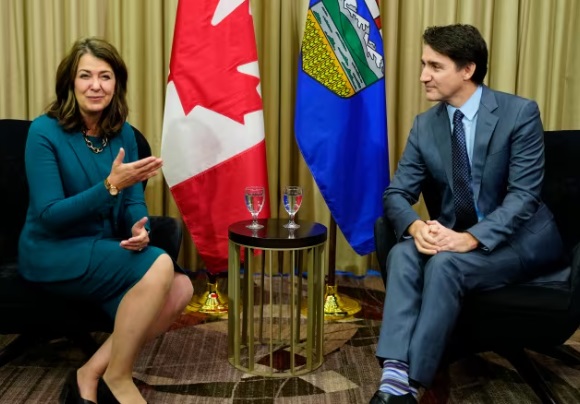
News release from Free Alberta Strategy
Premier Danielle Smith had a message for Ottawa last week.
Keep out.
On Wednesday, the Premier rolled out her latest weapon in the fight against federal intrusions into provincial jurisdiction.
If passed, Bill 18 – the Provincial Priorities Act – aims to align federal funding with provincial priorities, ensuring that said funding reflects Alberta’s interests.
The legislation stipulates that any agreements between the federal government and any provincial entities – including municipalities – must receive provincial approval to be considered valid.
Smith has already given it a nickname: “the stay-out-of-my-backyard bill.”
It’s an apt description of the legislation, especially considering that’s what the federal government has been doing for years – encroaching into Alberta’s jurisdiction.
The legislation shouldn’t come as a surprise to anyone.
We all know that most deals the Alberta government enters into with the federal government don’t work out for Albertans.
We end up paying more in federal taxes than gets spent in federal spending on the programs.
The programs come laden with restrictive conditions that undermine our autonomy, and are often detrimental to our ability to provide the services.
This is especially true with regard to the recent agreement between Ottawa and the provinces that allows the federal government to nationalize childcare.
The childcare agreement has come under heavy criticism due to funding shortfalls in the deal.
It also applies to housing, where despite Alberta accounting for 12% of the national population and experiencing the most rapid population growth, it received a mere 2.5% of the total $1.5 billion in federal housing funding last summer.
Jason Nixon, Minister of Seniors, Community and Social Services, is in charge of housing in Alberta – which is provincial jurisdiction.
On the latest rollout of conditional federal housing handouts, Nixon isn’t buying.
“We will not be bribed, with our own money, to increase the time it takes to get homes built with green energy that makes homes more expensive.”
The theory also applies to the federal government’s latest gambit – doing an end-around provincial negotiations and going directly to municipalities, who seem more interested in taking the money than the conditions attached.
Municipalities are provincial jurisdiction.
Bill 18 mandates that entities within Alberta’s jurisdiction, such as municipalities, universities, school boards, housing agencies, and health authorities, must seek the province’s approval before engaging in, modifying, extending, or renewing agreements with Ottawa.
Agreements between the federal government and provincial entities lacking Alberta’s endorsement will be deemed illegal under this legislation.
That’s Premier Smith’s message.
She’s had enough of it.
“It is not unreasonable for Alberta to demand fairness from Ottawa. They have shown time and again that they will put ideology before practicality, which hurts Alberta families and our economy. We are not going to apologize for continuing to stand up for Albertans so we get the best deal possible.
“Since Ottawa refuses to acknowledge the negative impacts of its overreach, even after losing battles at the Federal and Supreme Courts, we are putting in additional measures to protect our provincial jurisdiction to ensure our province receives our fair share of federal tax dollars and that those dollars are spent on the priorities of Albertans.”
Municipal Affairs Minister Ric McIver had additional thoughts:
“For years, the federal government has been imposing its agenda on Alberta taxpayers through direct funding agreements with cities and other provincial organizations. Not only does Alberta not receive its per capita share of federal taxpayer dollars, the money we do receive is often directed towards initiatives that don’t align with Albertan’s priorities.
“Albertans from all corners of the province expect our federal share of taxes for roads, infrastructure, housing and other priorities – not federal government political pet projects and programs in select communities.”
The Provincial Priorities Act is based on existing provincial legislation in Quebec – called “An Act Respecting the Ministère du Conseil executif” – which prohibits any municipal body from entering into or negotiating an agreement with the federal government or its agencies without express authorization from the Quebec government.
That’s right – the Quebec government has the same rule!
So, this boils down to the same argument we’ve been making for years – if Ottawa wants to step into our backyard, it must first seek Alberta’s approval.
Enough is enough – we won’t stand idly by as our interests are trampled upon.
It’s time for Ottawa to recognize Alberta’s autonomy and respect our right to determine our own future.
At the Free Alberta Strategy, we know that constant vigilance is necessary – for every fence we put up, the federal government tries to find a way around it.
We’ll continue to bring you information about what’s happening in Alberta’s backyard and fighting to keep Ottawa out.
The Free Alberta Strategy Team
Alberta
Building a 21st century transit system for Calgary

From the Frontier Centre for Public Policy
Calgary Transit is mired in the past, building an obsolete transit system designed for an archaic view of a city. Before the pandemic, transit carried 45 percent of downtown Calgary employees to work, but less than 10 percent of workers in the rest of the Calgary urban area, showing that Calgary Transit doesn’t really serve all of Calgary; it mainly serves downtown.
That would have worked in 1909, when Calgary’s first electric streetcars began operating and most jobs were downtown. By 2016, less than 15 percent of Calgary jobs were downtown, and the pandemic has reduced that number further.
Rather than design a transit system that serves the entire urban area, Calgary Transit light-rail system reinforced its downtown focus. Transit ridership has grown since the city’s first light-rail line opened in 1981, but it was growing faster before the light rail began operating than it has since then. Now Calgary Transit is planning even more downtown-oriented light-rail lines.
Light rail is an expensive form of low-capacity transit. The word “light” in light rail refers not to weight but to capacity: the American Public Transportation Association’s transit glossary defines light rail as “an electric railway with a ‘light volume’ traffic capacity.” While a light-rail train can hold a lot of people, for safety reasons a single light-rail line can move no more than about 20 trains per hour in each direction.
By comparison, Portland, Oregon runs 160 buses per hour down certain city streets. An Istanbul busway moves more than 250 buses per hour. Bogota Columbia busways move 350 buses per hour. All these transitways cost far less per mile than light rail yet can move more people per hour.
Once they leave a busway, buses can go on any city street, reaching far more destinations than rail. If a bus breaks down or a street is closed for some reason, other buses can find detours while a single light-rail breakdown can jam up an entire rail line. If transportation patterns change because of a pandemic, the opening of a new economic center, or the decline of an existing center, bus routes can change overnight while rail routes take years and cost hundreds of millions of dollars to change.
To truly serve the entire region, Calgary Transit must recognize that buses are faster, more flexible, and can move more people per hour to more destinations at a lower cost than any rail system. It should also recognize that modern urban areas have many economic centers and use buses to serve all those centers.
Besides downtown, Calgary’s major economic centers—the airport, the University of Calgary, Chinook Center, the Seton health center, and others—are mostly located near freeway on- and off-ramps. Calgary Transit should identify ten or so such centers geographically distributed around the region. It should locate transit centers—which need be no more than curbside parking reserved for buses with some modest bus shelters—near the freeway exchanges closest to each center.
It should then operate frequent (up to five times per hour) non-stop buses from every center to every other center. A few secondary transit centers might have non-stop buses operate to just two or three other centers. Local bus routes should radiate away from each center to serve every neighborhood of the Calgary urban area.
Since non-stop buses will operate at freeway speeds, the average speed of this bus system will be more than double the average speed of Calgary’s current bus-and-rail system. Transit riders will be able to get from any corner of the urban area to any other part of the urban area at speeds competitive with driving.
Such a polycentric system will serve a much higher percentage of the region’s workers and other travelers than the current monocentric system yet cost no more to operate. It will cost far less to build than a single rail line since most of the necessary infrastructure already exists. While some may worry that buses will get caught in congestion, the solution is to fix congestion for everyone, not spend billions on a slow rail system that only serves a few people in the region.
It is time for Calgary Transit to enter the 21st century. A polycentric bus system may be the best way to do it.
Randal O’Toole is a transportation policy analyst and author of Building 21st Century Transit Systems for Canadian Cities.
-

 Alberta2 days ago
Alberta2 days agoFree Alberta Strategy backing Smith’s Provincial Priorities Act
-

 COVID-1921 hours ago
COVID-1921 hours agoPro-freedom Canadian nurse gets two years probation for protesting COVID restrictions
-
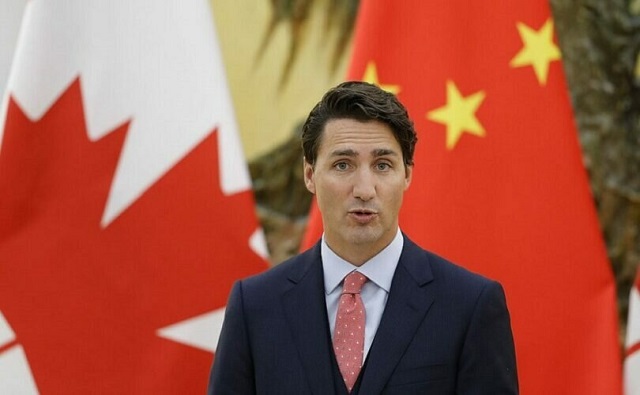
 espionage21 hours ago
espionage21 hours agoTrudeau’s office was warned that Chinese agents posed ‘existential threat’ to Canada: secret memo
-
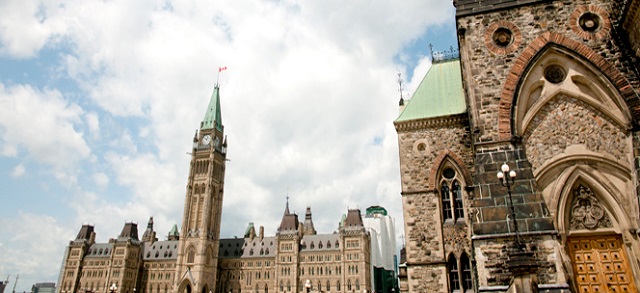
 Economy21 hours ago
Economy21 hours agoMassive deficits send debt interest charges soaring
-
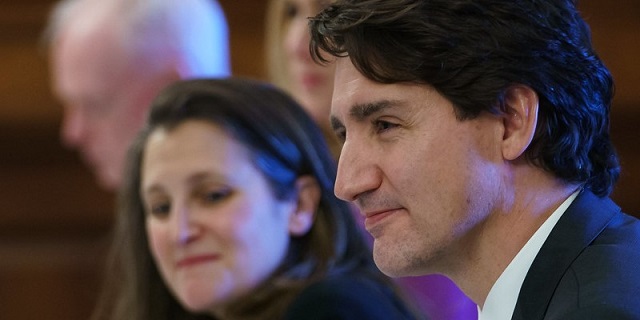
 Economy21 hours ago
Economy21 hours agoFederal budget’s scale of spending and debt reveal a government lacking self-control
-
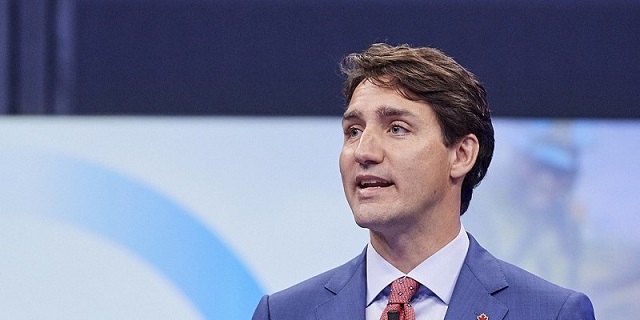
 Business11 hours ago
Business11 hours agoFederal budget fails to ‘break the glass’ on Canada’s economic growth crisis
-

 Automotive2 days ago
Automotive2 days agoBiden’s Kill Switch: The Growing Threat of Government Control of Your Car
-

 Business1 day ago
Business1 day agoUS firms like BlackRock are dropping their climate obsession while Europe ramps theirs up

